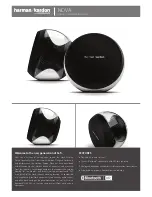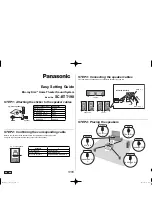
EN
TIG 185 DC. Operating manual.
TIG 185 DC. Operating manual.
19
18
7. Technical specifications.
8. Troubleshooting guide.
Problem
Excessive electrode
consumption
Erratic arc
Inclusion of tungsten
or oxides in weld
Cause
Inadequate gas flow
Improper size electrode for current required
Operating of reverse polarity
Electrode contamination
Excessive heating inside torch
Electrode oxidising during cooling
Shield gas incorrect
Incorrect voltage (arc too long)
Current too low for electrode size
Electrode contaminated
Joint too narrow
Contaminated shield gas. Dark stains on the electrode or
weld bead indicate contamination
Base metal is oxidised, dirty or oily
Poor scratch starting technique
Excessive current for tungsten size used
Accidental contact of electrode with puddle
Accidental contact of electrode to filler rod
Using excessive electrode extension
Inadequate shielding or excessive drafts
Wrong gas
Heavy surface oxides not being removed
Solution
Increase gas flow
Use larger electrode
Use larger electrode or change polarity
Remove contaminated portion, then prepare again
Replace collet. Try wedge collet or reverse collet
Increase downslope
Change to Argon (no oxygen or CO₂)
Maintain short arc length
Use smaller electrode or increase current
Remove contaminated portion, then prepare again
Open joint groove
The most common cause is moisture or aspirated air in gas
stream. Use welding grade gas only. Find the source of the
contamination and eliminate it promptly
Use appropriate chemical cleaners, wire brush, or abrasives
prior to welding
Many codes do not allow scratch starts. Use copper strike
plate. Use high frequency arc starter
Reduce the current or use larger electrode
Maintain proper arc length
Maintain a distance between electrode and filler metal
Reduce the electrode extension to recommended limits
Increase gas flow, shield arc from wind, or use gas lens
Do not use ArO₂ or ArCO₂ GMAW (MIG) gases for TIG welding
Use wire brush and clean the weld joint prior to welding
Specifications
Part no.
Power voltage AC
Frequency
No-load voltage
Rated input current
Output current
Rated output voltage
Duty cycle
No-load loss
Arc initiation
Efficiency
Power factor
Insulation grade
Housing protection grade
Weight
Dimensions L x W x H
MMA
Ryval DC TIG 185
AC 240V±15%
50/60 Hz
61 V
30.1 A
10 to 160 A
26.4 V
60% at 150 A
100% at 114 A
40 W
HF
80%
0.73
F
IP21
8.4 kg
430 x 185 x 306 mm
TIG
Ryval DC TIG 185
AC 240V±15%
50/60 Hz
61 V
25,6 A
10 to 185 A
18 V
70% at 185 A
100% at 170 A
40 W
HF
80%
0.73
F
IP21
8.4 kg
430 x 185 x 306 mm































